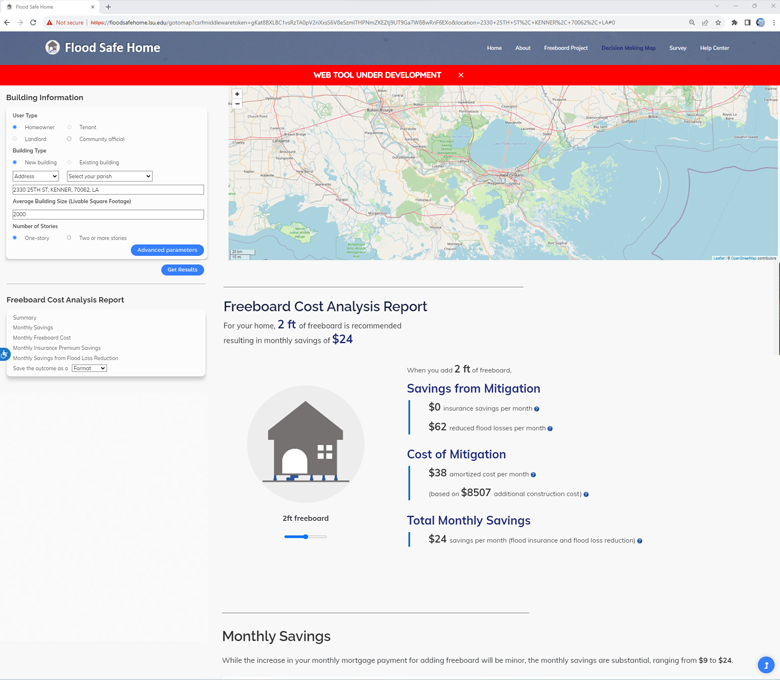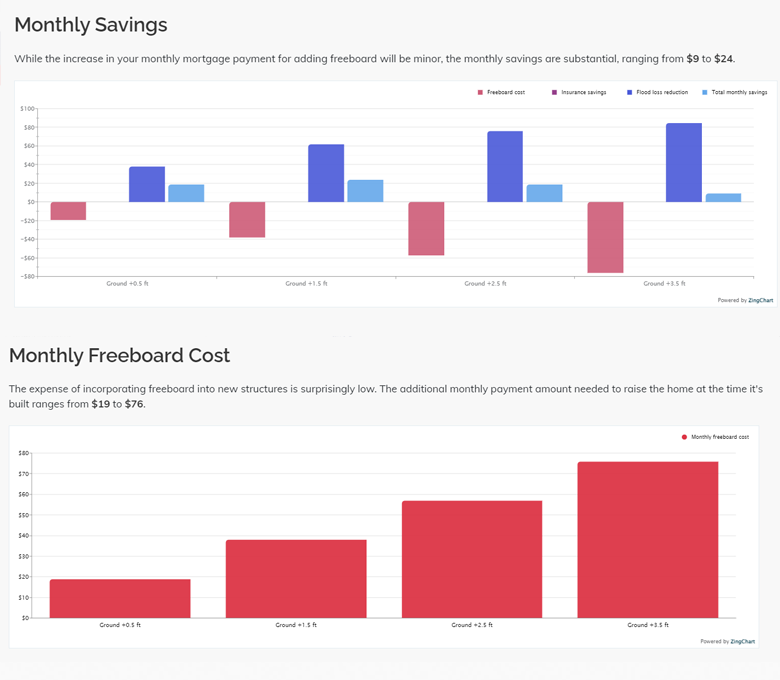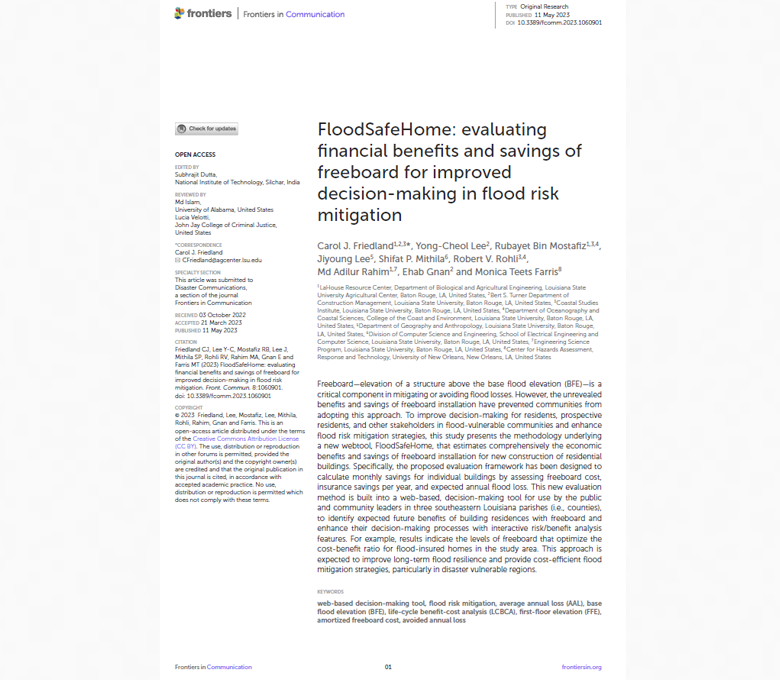Flood Safe Home: Version 1



About Organization
- Name: Louisiana State University
- Principal investigator (PI): Dr. Carol Friedland
- My role: Graduate Research Assistant
- My works: Web GIS & Frontend Development & Frontend Design
- Website: http://floodsafehome.lsu.edu
Objective
The primary objective of the "Flood Safe Home" project is to develop a user-friendly and intuitive web-based decision-making portal that empowers homeowners, developers, insurance adjusters, community leaders, and other stakeholders to make informed decisions regarding flood risk mitigation at the individual building level. This technology aims to bridge the gap in existing flood information systems by providing personalized flood risk data, cost-efficient freeboard height recommendations, and financial benefit estimates under various future scenarios. The project's core goal is to enhance flood resilience and long-term disaster preparedness by increasing awareness and understanding of flood risks and mitigation strategies.
Tools & Technologies
ArcGIS Javascript API, ArcGIS Pro, Leaflet, HTML, CSS, JavaScript
Project Details
The "Flood Safe Home" project was a comprehensive initiative that centered around the development of a robust web-based platform. This platform seamlessly integrated advanced technologies for flood risk assessment, data analysis, and decision support. A significant portion of my responsibilities within this project involved web design and frontend development, where I leveraged my expertise in HTML, JavaScript, and CSS. Through this, I successfully transformed the project's conceptual framework into a fully functional website.
In addition to the website's core functionality, I took a pivotal role in the implementation of webGIS. I skillfully integrated ArcGIS and Leaflet, enabling the effective visualization of map data on the website. This not only improved the user experience but also provided valuable geographic information to our users. The outcome was a user-friendly, informative, and accessible web platform that empowered individuals and communities to make informed decisions regarding flood risk mitigation.
The project team placed a high priority on user-friendliness. Our user interface was meticulously designed, featuring essential elements such as address autocompletion, error message handling, and interactive help center pages. We also provided quick tour guides to assist users in navigating the platform.
Furthermore, we ensured that the platform met stringent accessibility standards. Compliance with Automated Web Accessibility (ADA) and Web Content Accessibility Guidelines (WCAG) was a critical aspect of our project, guaranteeing that the platform catered to a wide range of individuals, including those with disabilities.
The system's core function was to calculate the most cost-efficient freeboard height for each residential building. It took into account variables like freeboard cost, flood risk, and insurance considerations, providing users with personalized flood risk and mitigation information tailored to their specific location.
The technology also granted users the flexibility to explore various scenarios by adjusting freeboard heights. It estimated the financial benefits and savings associated with different mitigation strategies, empowering users to make well-informed decisions.
It's important to highlight the research paper publication titled "FloodSafeHome: Evaluating Financial Benefits and Savings of Freeboard for Improved Decision-Making in Flood Risk Mitigation." This paper was authored by our team of experts, including Carol J. Friedland, Yong-Cheol Lee, Rubayet Bin Mostafiz, Jiyoung Lee, Shifat P. Mithila, Robert V. Rohli, Md Adilur Rahim, Ehab Gnan, and Monica Teets Farris. It was published in Frontiers in Communication in 2023 and is accessible with the DOI: 10.3389/fcomm.2023.1060901.